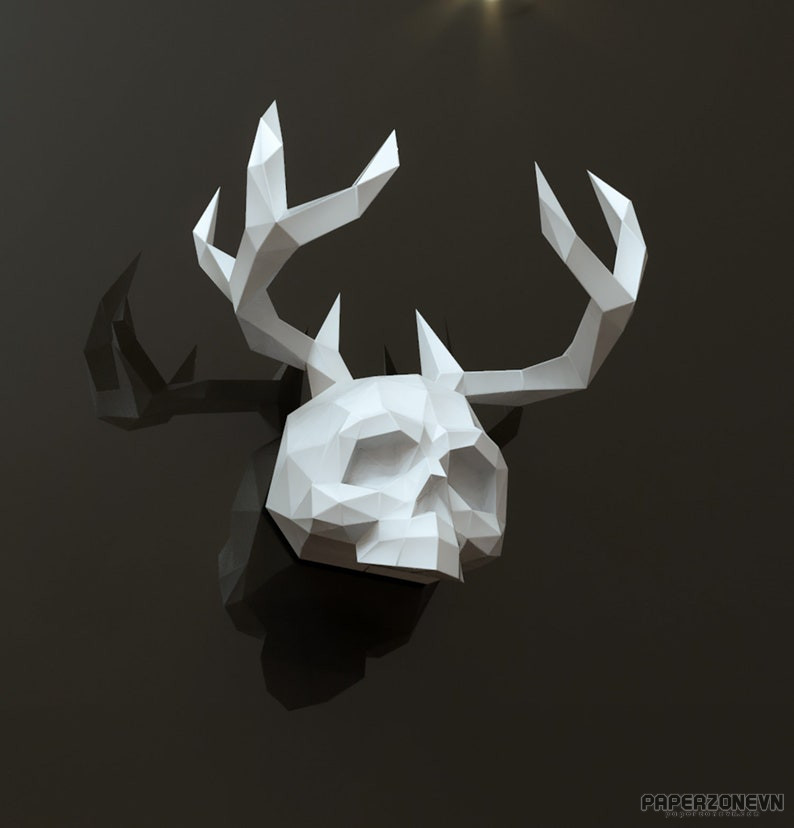- Thumbnail
-

- Author
- WonderMingStudio
- Printed File Format
- Page(s)
- 15
- Instruction Format
- Edge ID
Skull, Skull with Horns, Skull with horns for wall decor, Devil skull, Demon Skull, Skull, Bone, Horns DIY papercraft template for wall decor.
The skull is a bone structure that forms the head in vertebrates. It supports the structures of the face and provides a protective cavity for the brain. The skull is composed of two parts: the cranium and the mandible. In humans, these two parts are the neurocranium and the viscerocranium (facial skeleton) that includes the mandible as its largest bone. The skull forms the anterior-most portion of the skeleton and is a product of cephalisation—housing the brain, and several sensory structures such as the eyes, ears, nose, and mouth.[3] In humans these sensory structures are part of the facial skeleton.
Size :
330mm Height,
310mm Wide,
170mm Deep





The skull is a bone structure that forms the head in vertebrates. It supports the structures of the face and provides a protective cavity for the brain. The skull is composed of two parts: the cranium and the mandible. In humans, these two parts are the neurocranium and the viscerocranium (facial skeleton) that includes the mandible as its largest bone. The skull forms the anterior-most portion of the skeleton and is a product of cephalisation—housing the brain, and several sensory structures such as the eyes, ears, nose, and mouth.[3] In humans these sensory structures are part of the facial skeleton.
Size :
330mm Height,
310mm Wide,
170mm Deep





Sponsored: Google Advertising
Attachments
Last edited:
